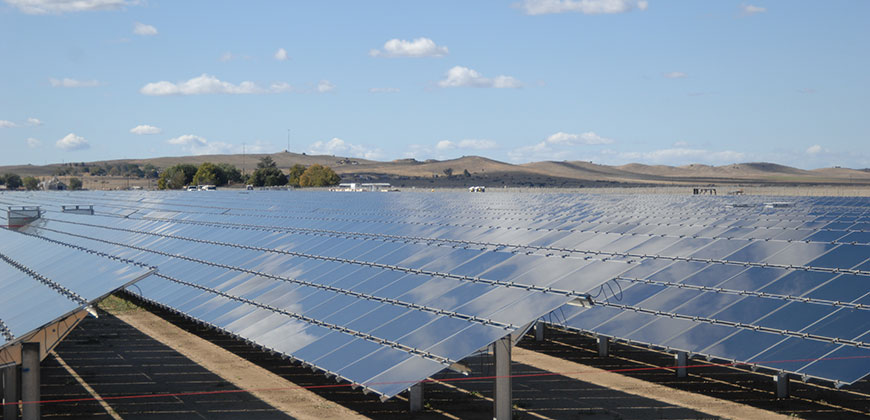
Pushing the boundaries of solar cell technology is the goal of a Colorado State University photovoltaics research team, which has just received support from the U.S Department of Energy’s SunShot Initiative.
The DOE’s SunShot Initiative has awarded research scientist Jason Kephart, who works with Professor W.S. Sampath in the Department of Mechanical Engineering, a $150,000, one-year competitive award to test a new solar cell architecture.
The SunShot Initiative is a collaborative national effort that seeks to make solar energy cost-competitive with other forms of electricity by the end of the decade.
New solar cell design
Kephart will test a new design for a cadmium telluride solar cell. An up-and-coming material for low-cost photovoltaics, cadmium telluride could become a competitor to silicon, from which most solar panels are made today. The design consists of a glass substrate, a transparent contact layer, a magnesium zinc oxide layer, a novel passivating oxide layer, cadmium telluride and a back contact. Kephart has already demonstrated higher-than-average voltage through parts of this design.
His team is experimenting with patterning holes in the middle passivating oxide layer using photolithography (a nanoscale etching process) to increase the voltage of the cell. This would determine whether this design can increase the cell’s photon-to-electron conversion efficiency past the maximum achieved to date, based on addressing the large voltage loss in cadmium telluride solar cells.
Located at the Engineering Research Center, the Sampath lab develops and tests new cell architectures and materials to increase voltage and efficiency while keeping the technologies scalable.
The researchers hope a successful test of their DOE-supported new cell architecture could help lead to widespread adoption of photovoltaic technology as a renewable energy source.